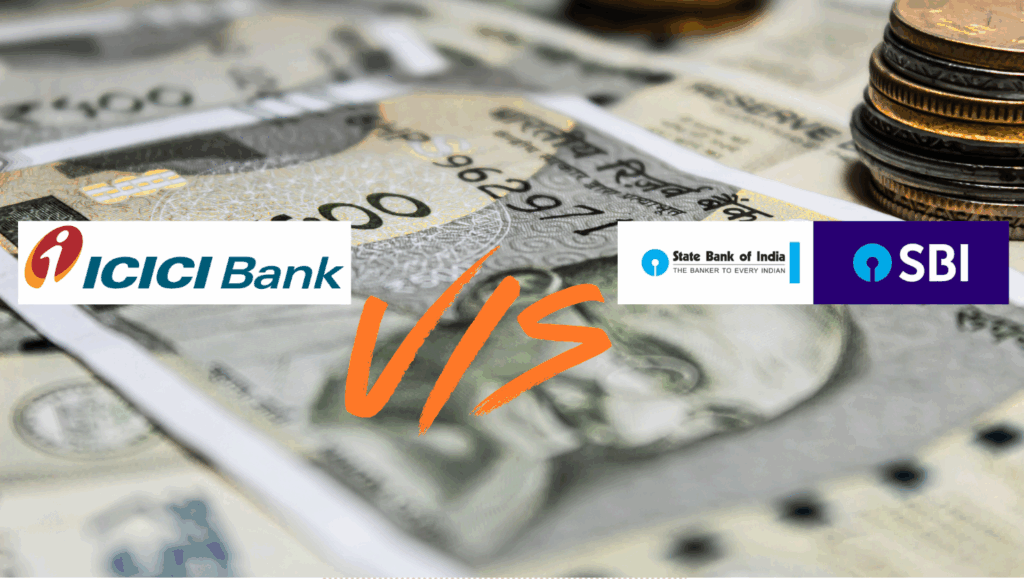
“Curious if you can keep ₹10 lakhs in your savings account in 2025? Explore legal limits, safety under DICGC, interest rates, tax implications, and smarter alternatives like FDs and mutual funds. Optimize your money with this comprehensive guide to banking and investments in India!”
The Questions like “Can I keep 10 lakhs in my savings account?” are more common than ever. With rising incomes, better investment opportunities, and evolving banking regulations in India, individuals are increasingly curious about how much money they can safely store in a savings account. Whether you’re saving for a big purchase, building an emergency fund, or simply parking your cash temporarily, understanding the rules, benefits, and limitations of keeping ₹10 lakhs (₹1 million) in a savings account is crucial.
Understanding Savings Accounts in India
A savings account is the most common type of bank account in India, designed for easy access to funds while earning a modest interest rate. As of March 2025, savings accounts remain a popular choice for salaried individuals, small business owners, and retirees due to their liquidity and safety. But can you keep ₹10 lakhs in a savings account without any issues? The short answer is yes, but there are several factors to consider.
Key Features of a Savings Account
- Liquidity: Withdraw money anytime via ATMs, online banking, or branch visits.
- Interest Rates: Typically range from 3% to 7% per annum, depending on the bank and balance.
- Safety: Deposits are insured up to ₹5 lakhs per depositor per bank under the Deposit Insurance and Credit Guarantee Corporation (DICGC).
Given these features, a savings account seems like a convenient option for storing ₹10 lakhs. However, let’s break down the legal, practical, and financial aspects to determine if it’s the best choice.
Is It Legal to Keep ₹10 Lakhs in a Savings Account?
Yes, there is no legal upper limit on how much money you can keep in a savings account in India. The Reserve Bank of India (RBI) does not impose restrictions on the maximum balance in a savings account, making it perfectly legal to hold ₹10 lakhs or even more. However, there are regulations and considerations that come into play:
The Income Tax Department monitors large cash transactions and deposits. Under Section 69A of the Income Tax Act, 1961, if you deposit ₹10 lakhs or more in cash into your savings account and cannot explain its source, the tax authorities may investigate. To avoid scrutiny:
- Ensure the money comes from a legitimate, documented source (e.g., salary, business income, property sale).
- Maintain proper records, such as bank statements or tax returns, to justify the funds.
2. Cash Deposit Limits
As per RBI guidelines, banks may flag cash deposits exceeding ₹10 lakhs in a financial year under the Prevention of Money Laundering Act (PMLA), 2002. If you’re transferring ₹10 lakhs via cheque, NEFT, or RTGS from another account, this isn’t an issue. But large cash deposits could trigger a report to the Income Tax Department or the Financial Intelligence Unit (FIU).
3. Bank Policies
Some banks have internal policies requiring customers to explain unusually high balances or transactions. For instance, if your savings account typically holds ₹50,000 and suddenly jumps to ₹10 lakhs, the bank might ask for clarification to comply with Know Your Customer (KYC) norms.
Verdict: Legally, you can keep ₹10 lakhs in your savings account, but transparency about the source of funds is essential to avoid complications.
How Safe Is ₹10 Lakhs in a Savings Account?
Safety is a top concern when deciding where to keep your money. In India, the DICGC, a subsidiary of the RBI, insures deposits in all commercial banks, cooperative banks, and regional rural banks. Here’s what you need to know:
DICGC Insurance Coverage
- Limit: Up to ₹5 lakhs per depositor per bank, including principal and interest.
- Coverage: Applies to savings accounts, fixed deposits, and current accounts combined.
- Scenario: If your bank fails, you’re guaranteed only ₹5 lakhs back, even if you have ₹10 lakhs in your savings account.
What This Means for ₹10 Lakhs
If you keep ₹10 lakhs in a single savings account and the bank collapses (a rare but possible event), you’d lose ₹5 lakhs unless the bank is bailed out or acquired by another institution. For example:
- In 2020, the collapse of Yes Bank led to a temporary freeze on withdrawals, though depositors were eventually protected due to a bailout.
- Smaller cooperative banks, like PMC Bank in 2019, saw depositors struggle to access funds beyond the insured limit.
How to Maximize Safety
- Split Your Money: Deposit ₹5 lakhs in one bank and ₹5 lakhs in another to ensure full insurance coverage.
- Choose Reputable Banks: Stick to well-established banks like SBI, HDFC, ICICI, or Axis Bank, which are less likely to fail.
Verdict: Your ₹10 lakhs is safe up to ₹5 lakhs per bank under DICGC insurance. For full protection, diversify across multiple banks.
Interest Rates on Savings Accounts
One of the biggest drawbacks of keeping ₹10 lakhs in a savings account is the low interest rate. As of March 2025, here’s a snapshot of savings account interest rates from major Indian banks:
- State Bank of India (SBI): 2.70% p.a. for balances up to ₹10 lakhs; 3% above ₹10 lakhs.
- HDFC Bank: 3% p.a. for balances up to ₹50 lakhs.
- ICICI Bank: 3% p.a. for balances up to ₹25 lakhs.
- Kotak Mahindra Bank: Up to 7% p.a. for balances above ₹25 lakhs (tiered structure).
Earnings on ₹10 Lakhs
Let’s calculate the annual interest earned on ₹10 lakhs:
- At 3% p.a.: ₹10,00,000 × 0.03 = ₹30,000
- At 7% p.a.: ₹10,00,000 × 0.07 = ₹70,000
After tax (assuming a 30% tax bracket), your net earnings drop to ₹21,000–₹49,000 annually. Compare this to inflation, which averaged 4–6% in India over the past decade (per RBI data). Your money’s real value could erode over time if it’s just sitting in a savings account.
Verdict: While you’ll earn some interest, savings accounts aren’t designed to grow wealth, especially with ₹10 lakhs.
Tax Implications of Keeping ₹10 Lakhs in a Savings Account
Interest earned on a savings account is taxable under the Income Tax Act, but there’s a small relief:
- Section 80TTA: Individuals below 60 years can claim a deduction of up to ₹10,000 on savings account interest per year.
- Section 80TTB: Senior citizens can claim up to ₹50,000.
Example
- Interest earned: ₹30,000 at 3% on ₹10 lakhs.
- Taxable amount (non-senior citizen): ₹30,000 – ₹10,000 = ₹20,000.
- Tax at 30%: ₹20,000 × 0.3 = ₹6,000.
Your net interest after tax would be ₹24,000. For larger balances or higher interest rates, the tax burden increases.
Verdict: The tax on savings account interest reduces your returns, making it less attractive for large sums like ₹10 lakhs.
Alternatives to Keeping ₹10 Lakhs in a Savings Account
If safety and liquidity are your priorities, a savings account works. But if you want better returns or tax efficiency, consider these alternatives:
1. Fixed Deposits (FDs)
- Interest Rates: 6–8% p.a. (as of March 2025, per BankBazaar).
- Safety: DICGC-insured up to ₹5 lakhs per bank.
- Tenure: 7 days to 10 years.
- Returns: ₹10 lakhs at 7% p.a. for 1 year = ₹70,000 (pre-tax).
Pros: Higher returns, guaranteed safety.
Cons: Less liquidity; premature withdrawal penalties.
2. Liquid Mutual Funds
- Returns: 6–7% p.a. (based on 2024–2025 trends).
- Liquidity: Redeem within 1–2 days.
- Risk: Low, but not guaranteed like FDs.
Pros: Better returns than savings accounts, tax-efficient if held long-term.
Cons: Slight market risk.
3. Recurring Deposits (RDs)
- Interest Rates: 6–7.5% p.a.
- Tenure: 6 months to 10 years.
- Returns: Ideal for gradual savings, not lump sums.
Pros: Disciplined savings with decent returns.
Cons: Limited flexibility.
4. Equity Mutual Funds (Long-Term)
- Returns: 10–15% p.a. (historical average).
- Risk: High, market-linked.
- Liquidity: Redeem anytime, but best for 5+ years.
Pros: High growth potential.
Cons: Not suitable for short-term needs.
5. Gold or Sovereign Gold Bonds
- Returns: 2.5% p.a. + gold price appreciation.
- Safety: Government-backed.
Pros: Hedge against inflation.
Cons: Returns depend on gold prices.
Verdict: For ₹10 lakhs, FDs or liquid mutual funds strike a balance between safety, returns, and liquidity.
Practical Scenarios: Should You Keep ₹10 Lakhs in a Savings Account?
Let’s explore real-life situations to help you decide:
Scenario 1: Emergency Fund
- Goal: Keep ₹10 lakhs for unexpected expenses (e.g., medical emergencies).
- Best Choice: Savings account + liquid fund combo (₹5 lakhs each).
- Reason: Immediate access to half, better returns on the rest.
Scenario 2: Short-Term Goal (e.g., Buying a Car in 6 Months)
- Goal: Save ₹10 lakhs for a purchase soon.
- Best Choice: Savings account or short-term FD.
- Reason: Safety and liquidity trump returns for short horizons.
Scenario 3: Long-Term Wealth Building
- Goal: Grow ₹10 lakhs over 5–10 years.
- Best Choice: Equity mutual funds or a mix of FDs and stocks.
- Reason: Higher returns outweigh low savings account rates.
Pros and Cons of Keeping ₹10 Lakhs in a Savings Account
Pros
- Liquidity: Access funds anytime.
- Safety: Insured up to ₹5 lakhs.
- Simplicity: No complex management required.
Cons
- Low Returns: 3–7% p.a. vs. 6–15% in alternatives.
- Inflation Risk: Money loses value over time.
- Tax Burden: Interest is taxable.
Can You Keep ₹10 Lakhs in Your Savings Account?
Yes, you can keep ₹10 lakhs in your savings account—it’s legal, safe up to ₹5 lakhs per bank, and offers unmatched liquidity. However, it’s not the most efficient use of your money in 2025. With low interest rates, inflation, and tax implications, your ₹10 lakhs could lose value over time. For short-term needs or emergencies, a savings account makes sense, but for growth, alternatives like FDs, mutual funds, or gold bonds are worth considering.
Ultimately, the decision depends on your financial goals, risk tolerance, and time horizon. Consult a financial advisor to tailor a plan that maximizes your ₹10 lakhs while keeping it secure. What’s your next step—leaving it in the bank or exploring new options?
-

RBI’s Approval: HDFC Group Gets 9.5% Stake Nod in IndusInd Bank
-

SBI’s YONO 2.0 Promises Faster, Smarter, Safer Payments — A Real Threat to PhonePe & GooglePay?
-

Indian Stocks Fall as Foreign Investors Extend Sell-Off: What’s Behind the Market Jitters?
-

BlackRock’s $140M Ethereum Dump: Hidden Opportunity for Indian Investors?



























